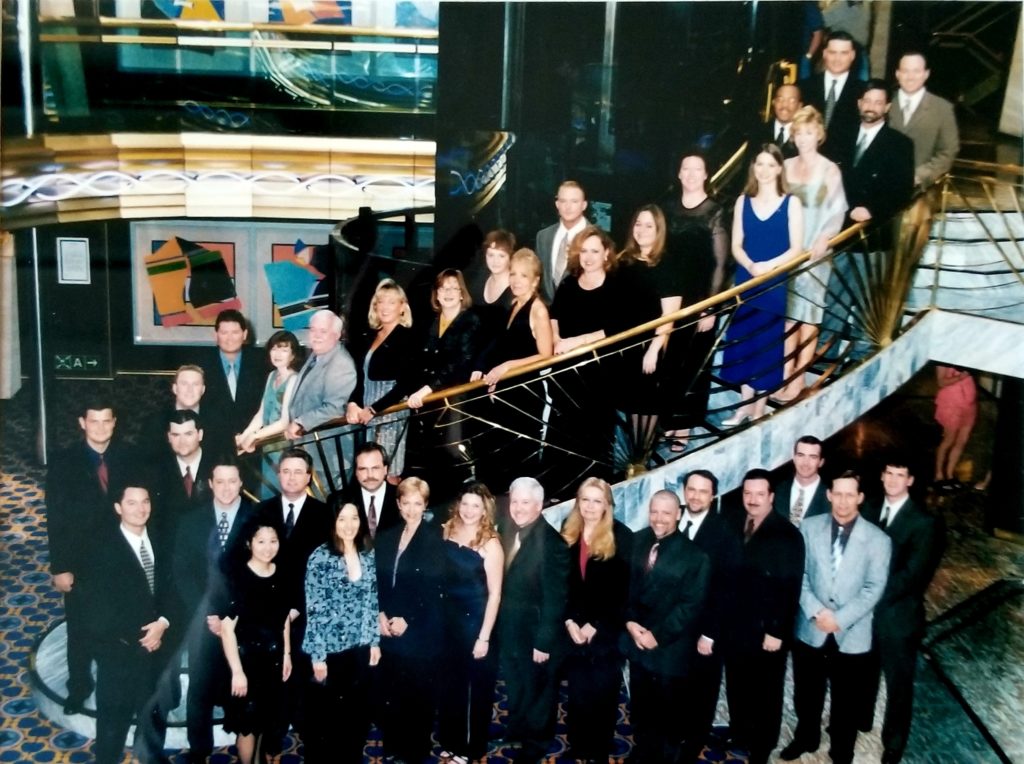Going Paperless
Everyone at Naylor works with a computer, if not more than one computer. But this hasn’t always been the case. Naylor didn’t go “paperless” until 2001.
On a typical 1990s sales rep desk, you’d find a phone, a stack of note cards with leads’ contact information handwritten on them, and stacks of insertion orders (IOs) waiting to be manually filled out with advertising orders. Each insertion order consisted of two or three sheets of paper, plus artwork which consisted of paper-based copy or film. Rarely did we see a digital ad. My team acted as the traffic people of our agency. Every day, we’d take the IO paperwork and review it for accuracy, checking the specs, positions, artwork and necessary signatures. When the rep received a signed and faxed IO from the advertiser, they’d sign up for a time to use one of the few sales computers and enter their sales in our system.
Then they’d photocopy the IO three times, staple each set of paper together and attach the artwork. We’d ship the artwork with two sets of paperwork overnight to Naylor’s production facility in Winnipeg. Up there, someone would proof it and send to production. The third copy was filed away in Gainesville by book code, Naylor’s alphanumeric project code, which made for a huge time cost, and tons of storage space needed.
We also had a paper-based, manual process for proofing magazines and directories before they went to press. When sales closed on a “book,” we would check the position of each ad sold to ensure it was planned for the correct position, and that every position within a project (for example, the front or back covers) was filled with some kind of content. Then we’d send the project – printed out on paper – to the layout department in Winnipeg. They would call you if there was an issue. Layout would produce a proof of a magazine or directory, print it, and send it back to Gainesville for further review. You had a certain number of days to approve the proof, meaning you had a deadline to review every listing and ad for typos, the correct artwork, properly formatted phone numbers, and so on. You would submit any changes or corrections needed on another paper form, and send it back to Layout.
Our editorial team would proof projects as well, on additional sheets of paper. Layout would make your changes, print a new proof and ship the new proof back to you. Once you received a new proof, you would have to verify the first set of changes. Between the time needed to review, shipping times and production times, proofing a big project could take up to a month.

Annually, Naylor sponsored a “President’s Cruise” for the top company performers. One of the best events on each cruise was a business meeting where each of the attendees offered one or two suggestions for improvement to our company. On the 2000 cruise, my suggestion was that we create a paperless ad insertion order system. We would fax orders, or send them digitally. Lots of people agreed with my suggestion, and the company decided to run with it. Shortly after, the IT team started working on the creation of a software system that would handle our ad orders and projects. This became MIS, the in-house software platform our sales team still uses today. MIS also made it possible to check book layouts digitally, making the manual, paper proofs obsolete.
Considering how much we rely on email and the internet now, it’s wild to think that we once replied so much on paper and snail mail. Production is a lot more efficient now thanks to the use of digital technologies and our transition to a paperless system. Ultimately, going paperless saved substantial production time, shipping costs, and storage space, and was good for the environment.

